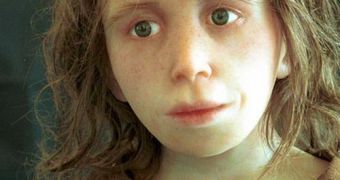The Neanderthals were a species of hominids that walked the surface of our planet between about 130,000 to approximately 30,000 years ago. At that time, they went extinct, or at least so researchers thought. But a new study suggests that at least some of them may have actually been absorbed in the modern human population. The investigation shows that some of our ancestors may have mated with Neanderthals, which means that many people living today could have traits derived from these beings.
Modern-day humans co-existed with Neanderthals in Europe for at least a few thousands of years. Our ancestors were fortunately a lot better equipped to adapt to their environment, and therefore survive, whereas our competition was eventually subdued, and slowly disappeared. Because of the similarities between the two species, many researchers have been debating how the Neanderthals may have looked like, and on whether it was possible for humans to mate with them, and produce viable offspring, for a very long time. Reaching a conclusion in this argument is probably still some distance away though.
“The issue has been highly contentious for some time,” explains Keith Hunley, who is a genetic anthropologist at the University of New Mexico, in the United States. The expert is also the author of the new investigation, which was detailed last week in Albuquerque, New Mexico, at the annual meeting of the American Association of Physical Anthropologists. In the paper, Hunley and his team reveal signs that indicates our ancestors could interbreed with both Neanderthals (Homo neanderthalensis) and Homo heidelbergensis (another early hominid), LiveScience reports.
The conclusion is based on genetic analysis of our DNA today. Researchers hypothesized that, if interbreeding indeed occurred, then traces of genetic material might have been preserved in our genome. When they began searching for such leftovers, the study team found them immediately. A sample of 2,000 individuals from around the world was analyzed, so as to look for connections that transcend ethnic groups and races. According to the data derived from these studies, our species mixed its genes with others' at two distinct point in history – one some 60,000 years ago, and the other one more recently, affecting people of Oceanic descent.
“I have been arguing for this position throughout my career, ever since I began to study Neanderthals and other populations. It has always seemed clear that some Neanderthal anatomy appears in living populations,” says University of Michigan research scientist Milford Wolpoff. The new study represents the first instance when DNA from living, modern-day humans was used for deriving such genetic data.

 14 DAY TRIAL //
14 DAY TRIAL //